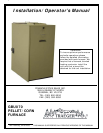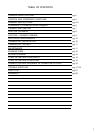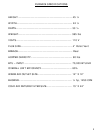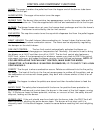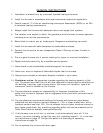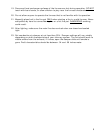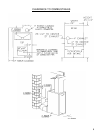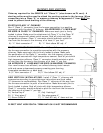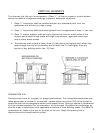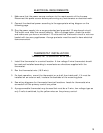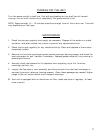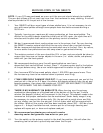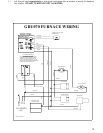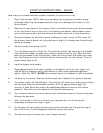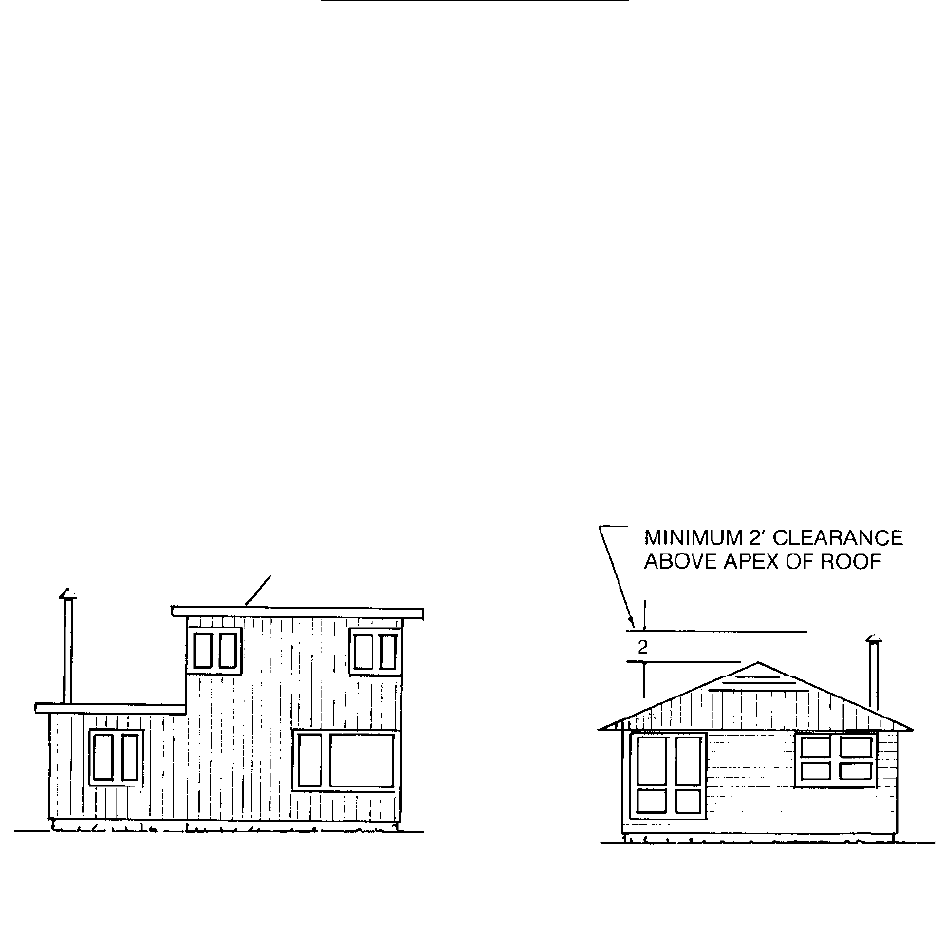
VERTICAL CHIMNEY’S
The chimney that this unit is connected to (Class “L”, all fuel or masonry) should extend
above the roofline of adjacent buildings to prevent downdraft situations.
1. Class “L” connectors shall be installed without any downward pitch from the
appliances and without any dips or sags.
2. Class “L” connectors shall be pitched upward from the appliance at least ¼” per foot.
3. Class “L” starter adapter shall be firmly attached to the vent outlet collar of the
furnace and a positive seal made with high temp silicone, approved metal tape
and/or sheet metal screws.
4. The chimney shall extend at least three (3) feet above the highest point when they
pass through the roof of the building and at least two (2) feet higher than any
portion of any building within ten (10) feet.
HIGH BUILDING OR
SECTION OF BUILDING
COMBUSTION AIR:
Furnaces must have air (oxygen) for proper performance. The incomplete combustion that
takes place when a furnace is “air starved” causes carbon monoxide (CO) to be formed in
quantities that can be dangerous inside a well-sealed house. Having a source of combustion
air from outside prevents this “air starvation” of the furnace. Provisions for combustion air
shall be made in accordance with applicable provisions of local building codes. The GBU070
combustion air intake is the slot on the back of the unit. Keep this opening free of
obstructions which would restrict airflow.
8



